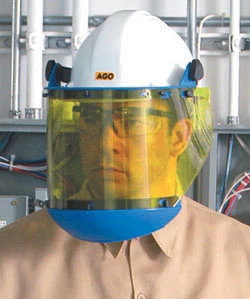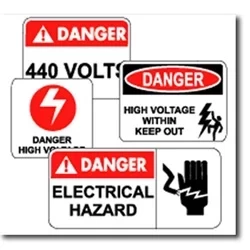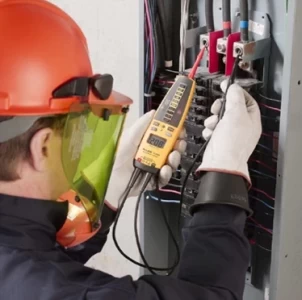Overcoming Resistance to Change in Arc Flash Practices

Implementing new arc flash safety innovations often requires significant changes in organizational practices and culture. Resistance to change is a common challenge that can hinder the successful adoption of these safety innovations, impacting the overall effectiveness of arc flash risk management.
The introduction of new safety technologies, revised procedures, or enhanced PPE inevitably faces some degree of resistance. This can arise due to technical concerns, fear of the unfamiliar, or a perceived disruption to established work routines. Overcoming these barriers is crucial for successful implementation and realizing the full benefits of arc flash safety innovations.
Visit Our Arc Flash Study Course
Understanding the Sources of Resistance
- "We've Always Done It This Way" Mentality: Habit and a reluctance to change established practices can create a significant hurdle, especially among experienced workers.
- Comfort and Convenience vs. Safety: New PPE might be perceived as bulkier or less comfortable. Innovative procedures could sometimes be seen as initially slowing down work processes.
- Knowledge Gaps and Misconceptions: Workers might not fully comprehend the 'why' behind changes, leading to a belief that the new measures are unnecessary.
- Fear of Technology: Automation, remote racking, or complex monitoring systems can induce anxiety, particularly if workers worry about job displacement or feel they lack the skills to use the technology.
Strategies for Facilitating Change
- Emphasize the Benefits: Focus on how innovations directly improve worker protection, reduce the likelihood of severe injuries, or create long-term operational benefits.
- Transparency and Participation: Involve workers or their representatives in evaluating new technologies or procedures. Solicit feedback and address concerns openly.
- Phase-In Approach: Where possible, introduce changes gradually, allowing workers time to adapt and build confidence with new systems.
- Robust Training: Go beyond the mechanics of new equipment or PPE. Explain the underlying safety principles and how innovations tie into the broader arc flash risk assessment.
- Championing Change: Identify individuals with natural leadership who embrace innovation. Their advocacy among peers can have a powerful ripple effect.
Identifying the Sources of Resistance
Cultural Barriers
In many organizations, a longstanding culture of "how things have always been done" can be a major source of resistance to new safety practices. This cultural inertia can lead to skepticism or reluctance to adopt new technologies and methodologies.
Lack of Awareness and Understanding
Resistance can also stem from a lack of understanding of the risks associated with arc flash and the benefits of new safety innovations. Without clear communication about the necessity and advantages of change, employees may view new practices as unnecessary or burdensome.
Fear of the Unknown
Changes in safety practices can generate fear and anxiety among employees, particularly if they perceive the changes as potentially impacting their job security, roles, or responsibilities.
Strategies for Successful Adoption and Change Management
Engaging Leadership and Stakeholders
Strong leadership commitment is crucial for driving change and overcoming resistance. Leaders and key stakeholders should actively promote the benefits of new safety practices and demonstrate their commitment through involvement and support.
Comprehensive Communication and Education
Effective communication and education programs can address misunderstandings and alleviate fears about new safety measures. These programs should clearly articulate the reasons for change, the expected benefits, and how the changes will be implemented.
Involving Employees in the Change Process
Involving employees in the planning and implementation of new safety practices can foster a sense of ownership and acceptance. Soliciting feedback and involving workers in decision-making processes can also help identify potential issues and solutions early in the transition.
Leveraging Technology and Data
Data-Driven Decision Making
Utilizing data and analytics can help demonstrate the need for change and the effectiveness of new safety measures. Objective data can provide compelling evidence to support the adoption of new practices and technologies.
Technological Demonstrations and Pilot Programs
Implementing pilot programs or demonstrations of new safety technologies can help alleviate concerns by providing tangible examples of how the innovations work and their benefits in real-world settings.
Building a Culture of Continuous Improvement
Fostering a Safety-First Culture
Creating a culture that prioritizes safety over complacency requires ongoing effort and reinforcement. This includes recognizing and rewarding compliance with new safety practices and creating opportunities for continuous learning and improvement.
Monitoring and Evaluating Change
Regularly monitoring and evaluating the effectiveness of new safety practices is essential for sustaining change. This process can help identify areas for improvement, adjust strategies as needed, and reinforce the value of the changes.
Conclusion
Overcoming resistance to change in arc flash safety practices requires a strategic approach that addresses the cultural, organizational, and individual factors influencing acceptance. Through strong leadership, effective communication, employee involvement, and the strategic use of technology and data, organizations can successfully implement and sustain new safety innovations, leading to a safer and more compliant workplace.






